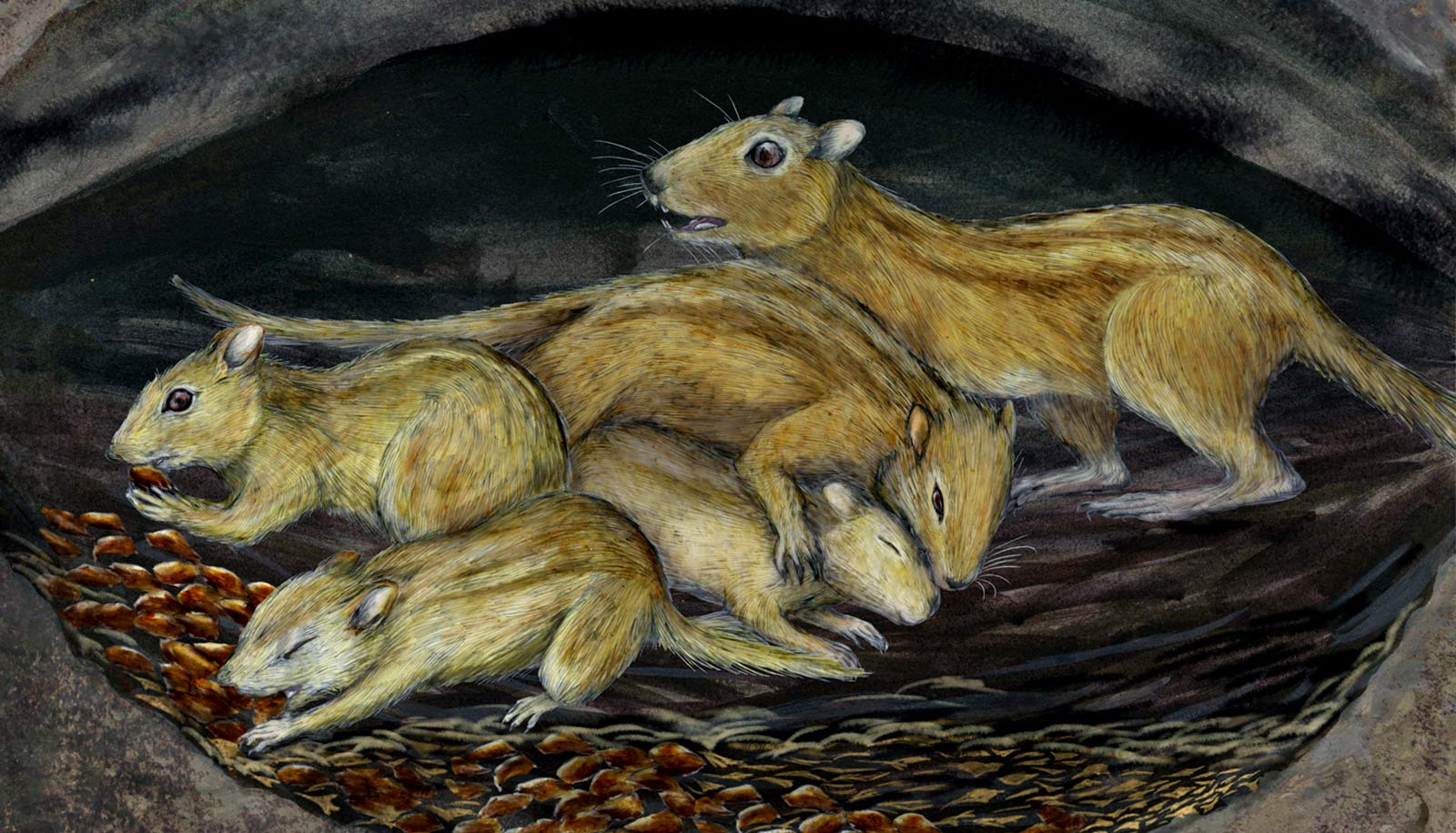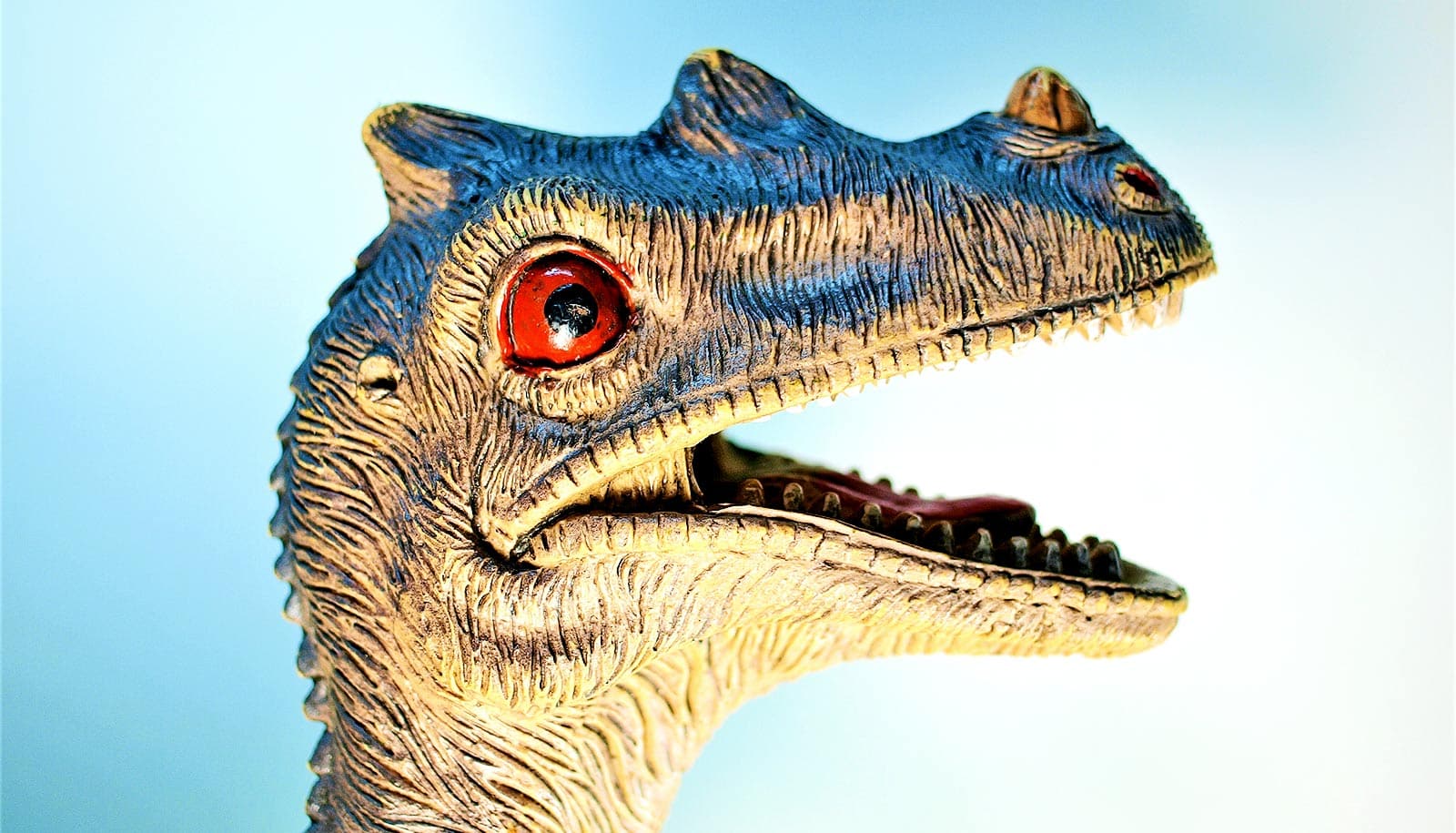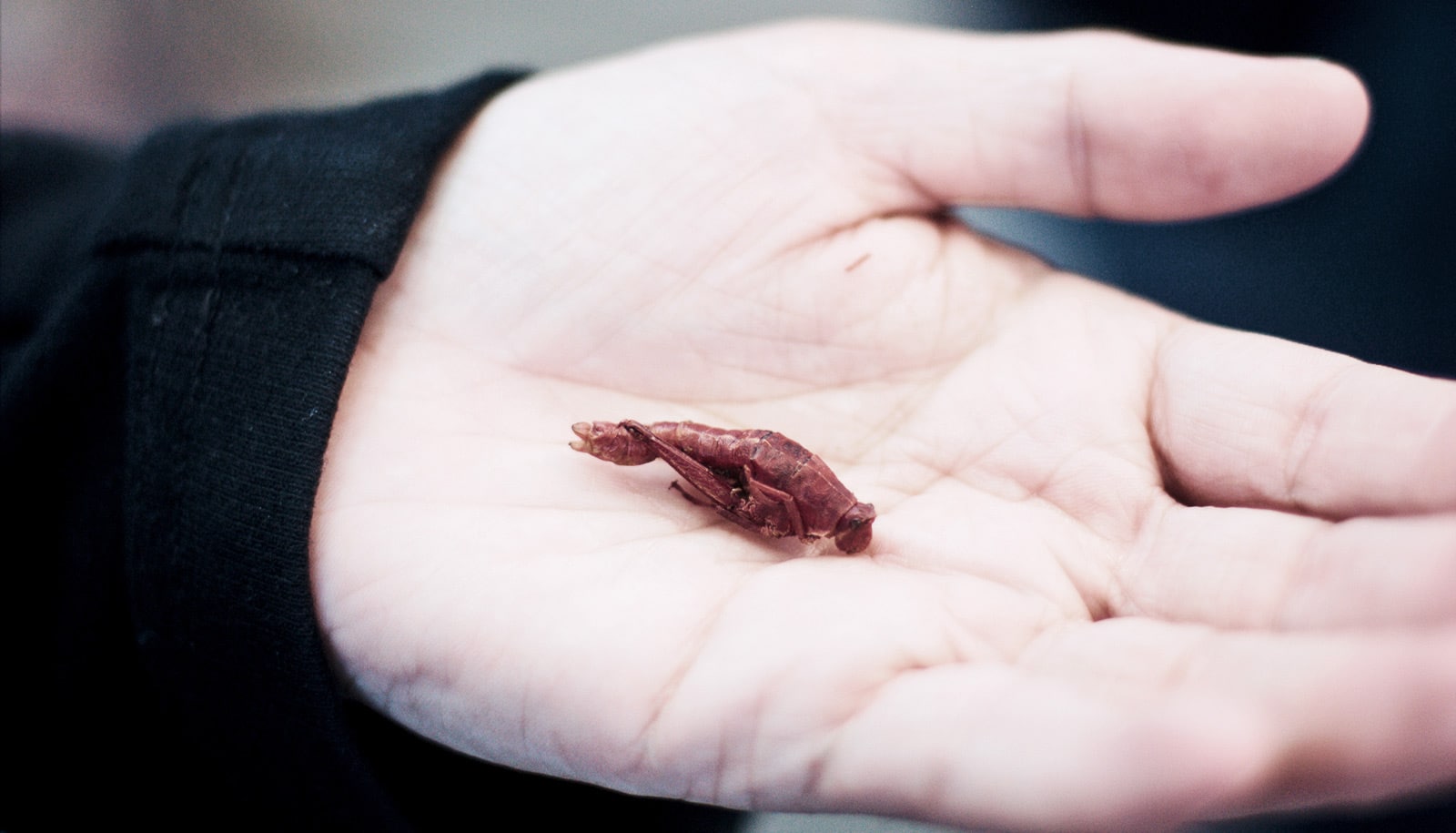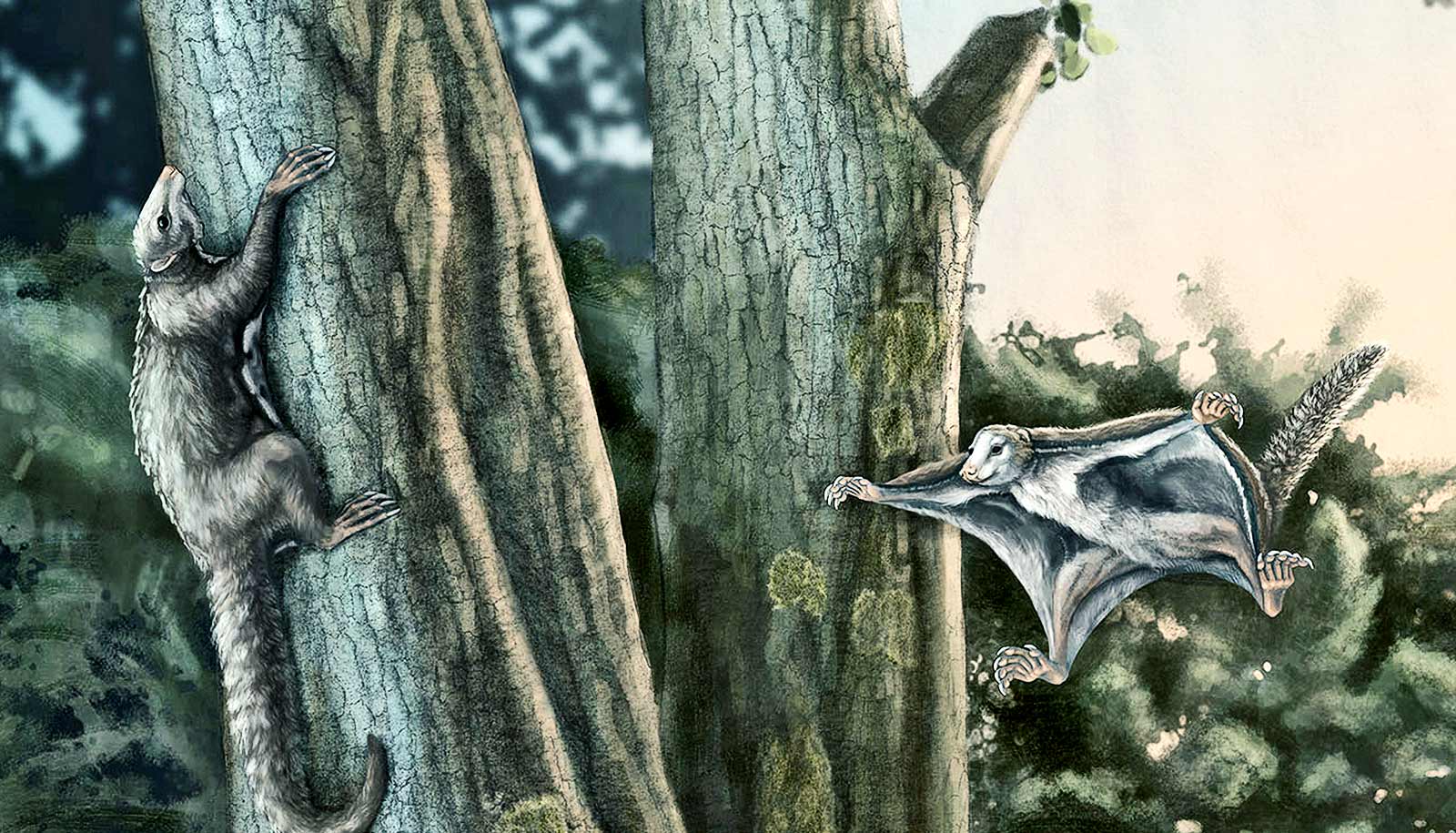The earliest evidence of mammal social behavior goes back to the age of dinosaurs, new research indicates.
The evidence, published in the journal Nature Ecology & Evolution, lies in the fossil record of a new genus of multituberculate—a small, rodent-like mammal that lived during the Late Cretaceous of the dinosaur era—called Filikomys primaevus, which translates to “youthful, friendly mouse.”
The fossils are the most complete mammal fossils ever found from the Mesozoic in North America. They indicate that F. primaevus engaged in multi-generational, group-nesting, and burrowing behavior, and possibly lived in colonies.
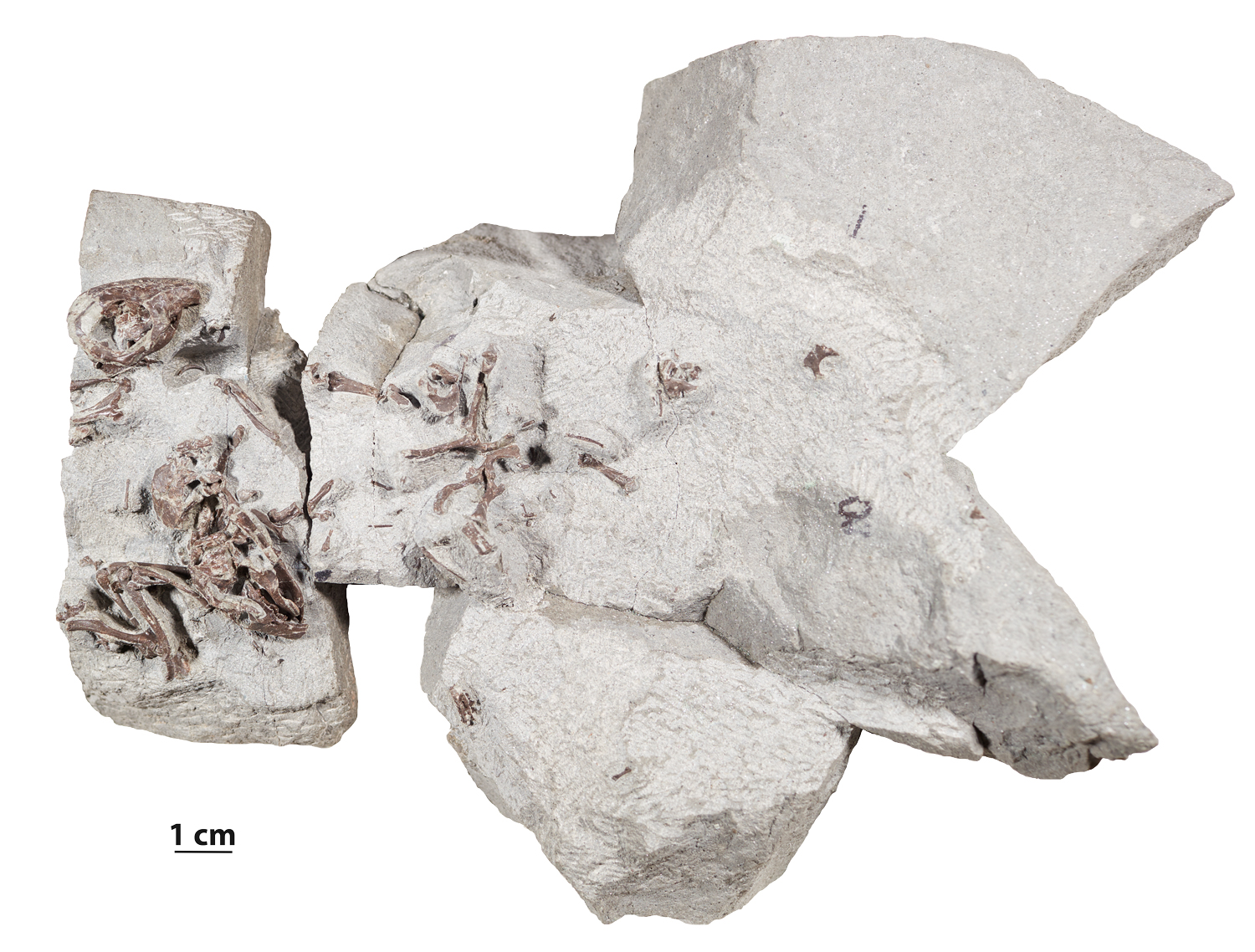
Study coauthors—including lead author Luke Weaver, a graduate student in biology at the University of Washington, and senior author Gregory Wilson Mantilla, professor of biology and curator of vertebrate paleontology at the Burke Museum of Natural History and Culture—analyzed several fossils. All the fossils are about 75.5 million years old, and come from a well-known dinosaur nesting site called Egg Mountain in western Montana.
Fossil skulls and skeletons of at least 22 individuals of F. primaevus were discovered at Egg Mountain, typically clustered together in groups of two to five, with at least 13 individuals found within a 30-square-meter area in the same rock layer.
Based on how well preserved the fossils are, the type of rock they’re preserved in, and F. primaevus’ powerful shoulders and elbows—which are similar to those of today’s burrowing animals—Weaver, Wilson Mantilla, and coauthors hypothesize these animals lived in burrows and were nesting together. Furthermore, the animals found were a mixture of multiple mature adults and young adults, suggesting these were truly social groups as opposed to just parents raising their young.
“It is really powerful, I think, to see just how deeply rooted social interactions are in mammals,” says Weaver. “Because humans are such social animals, we tend to think that sociality is somehow unique to us, or at least to our close evolutionary relatives, but now we can see that social behavior goes way further back in the mammalian family tree.
“Multituberculates are one of the most ancient mammal groups, and they’ve been extinct for 35 million years, yet in the Late Cretaceous they were apparently interacting in groups similar to what you would see in modern-day ground squirrels.”
Previously, scientists thought social behavior in mammals first emerged after the mass extinction that killed off the dinosaurs, and mostly in the Placentalia—the group of mammals humans belong to, which all carry the fetus in the mother’s uterus until a late stage of development. But these fossils show mammals were socializing during the age of dinosaurs, and in an entirely different and more ancient group of mammals—the multituberculates.
“These fossils are game changers,” says Wilson Mantilla. “As paleontologists working to reconstruct the biology of mammals from this time period, we’re usually stuck staring at individual teeth and maybe a jaw that rolled down a river, but here we have multiple, near complete skulls and skeletons preserved in the exact place where the animals lived. We can now credibly look at how mammals really interacted with dinosaurs and other animals that lived at this time.”
Coauthors are from Montana State University, Yale University, and Nanjing University. The research had funding from the National Science Foundation, the Doris O. and Samuel P. Welles Research Fund, the University of Washington, and the Burke Museum.
Source: University of Washington
